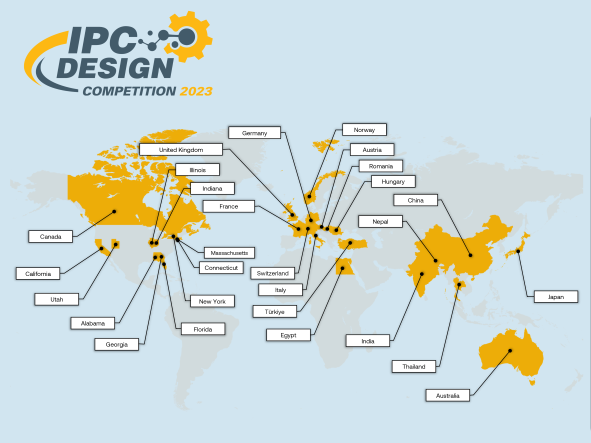In conjunction with Instrutec 2022 and the Estonian Electronics Industries Association, IPC hosted its popular IPC Hand Soldering Competition in Tallinn, Estonia October 12-14, 2022, welcoming 31 competitors from 14 European electronics companies.
Skilled contestants competed to build an assembly in accordance with IPC-A-610 – Class 3 criteria, and were judged on the functionality of the assembly, compliance with the assembly process, and overall product quality. Contestants were allowed a maximum of one hour to complete the process.
On the winner’s podium at Instrutec 2022 were:
First Place: Returning first prize winner, Timmo Antso, Scanfil. He received a certificate, a cash prize of 300 EUR, a soldering station from sponsor Hakko, and a gift from sponsor Almit. As the winner, Ansto qualified for the IPC Hand Soldering World Championship at electronica in Munich, Germany, November 15–18, 2022.
Second place: Ave Esko, Scanfil. She received a certificate, a cash prize of 200 EUR, and a soldering station from sponsor Hakko, and a gift from sponsor Almit.
Third Place: Karen Andresoo, Enics. She received a certificate, a cash prize of 100 EUR, a soldering station from sponsor Hakko, and a gift from sponsor Almit.
Best Company Team Award
IPC and the Estonian Electronics Industries Association presented the Best Company Team Award, recognizing the company which engaged the best team, with overall score based on the best scores of competitors from that company. All companies that registered two or more competitors were automatically entered into the Best Company Team category. For the Estonian competition, 11 companies were eligible for the Best Company Team Award. The top prize was presented to Scanfil, with a winning score achieved by Scanfil competitors Timmo Ansto and Ave Esko.
IPC thanks the Instrutec tradeshow and the Estonian Electronics Industries Association for hosting the event. IPC is grateful to the HSC sponsors for their generous support:
- Gold sponsors: Hakko, Thales, and Ateliers System
- Silver Sponsors: Optilia, Almit, Polygone CAO, SFM-Societe Française de Microscopie, the local IPC licensed training center Tallinna Polüteknikum and the Estonian Electronics Industries Association
“IPC thanks and congratulates all the participants and their companies for their interest and for taking up the challenge,” said Philippe Leonard, IPC Europe director. “We look forward to seeing all of the first-place winners compete in the Hand Soldering World Championship at electronica in Munich, next month.”
For more information on HSC competitions in Europe, contact Leonard at PhilippeLeonard@ipc.org.

